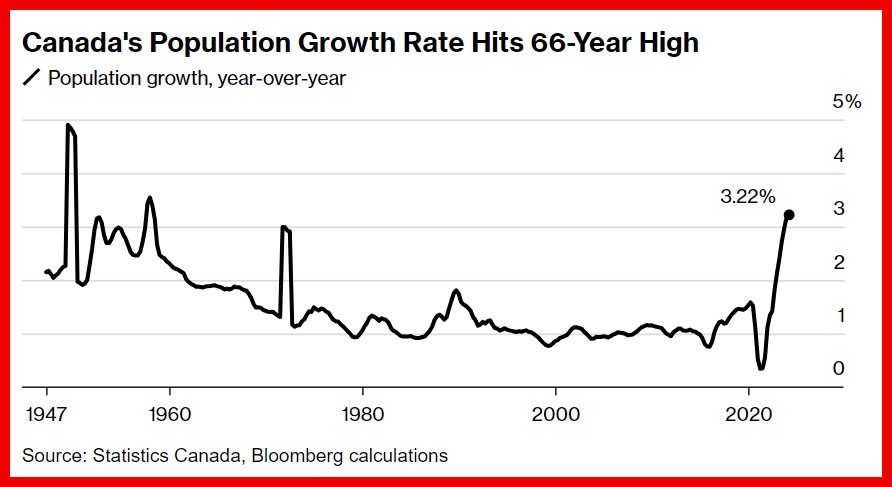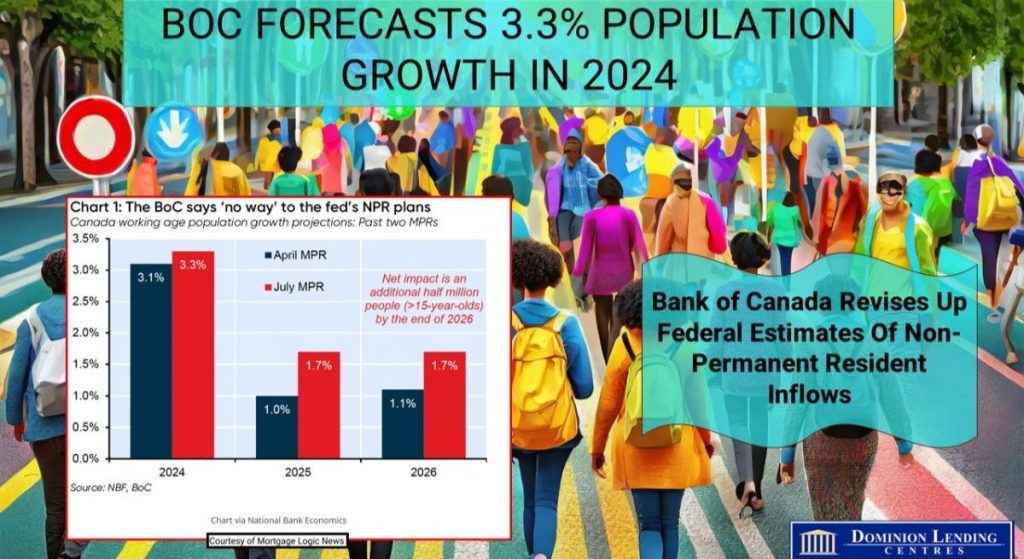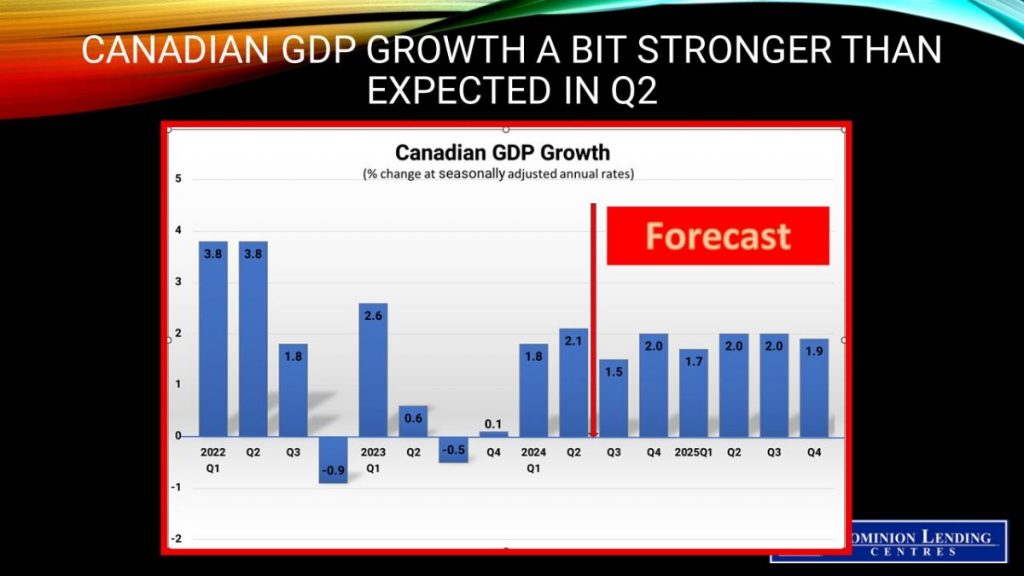Articles
Posted on August 30, 2024
Canadian Q2 Real GDP Growth A Bit Stronger Than Expected, But Per Capita Real GDP Falls for The Fifth Consecutive Quarter
Q2 Canadian Growth, Boosted By Record Population Gains, Slows In June And July
Canada’s economy grew a bit more than expected in the second quarter, but falling per-capita gross domestic product and softening household consumption assure the Bank of Canada that it will cut rates for a third consecutive meeting next week.
Canadian GDP rose 2.1% annually in the second quarter, beating the median estimate of 1.8% in a Bloomberg survey of economists and the Bank of Canada’s forecast of 1.5%. Q1 growth was revised up a tick to 1.8%. Q2 growth was the strongest since the first quarter of 2023 and was boosted by the sharp rise in population. Canada’s population grew by 1.3 million people last year to 40.8 million, according to Statistics Canada–its fastest annual pace in Canada since 1957. This is one of the world’s most extensive immigration programs as pressures mount on Trudeau’s government to slow future inflows.
At a 3.2% annual rate, Canada now ranks among the world’s fastest-growing countries, only behind a few African nations with high fertility rates. In 2022, the population grew 2.7%, or by 1.1 million people, a previous record.
According to Bloomberg News, “Only 2.4% of the increase last year came from net births, and the rest was driven by international migration, primarily non-permanent residents such as foreign workers and students. Without temporary immigration, Canada’s population growth would have been 1.2%.”
Political pressure is mounting for the government to cut the influx of temporary residents entering the country in the next few years, but the Bank of Canada recently revised up the federal government’s forecasts of population gains this year and next.
Canada’s economy benefited from strong population growth, but this surge put pressure on infrastructure and services, worsened housing shortages, and led to soaring rents. Concerns about the declining standard of living prompted the government to reduce its immigration targets, serving as a cautionary tale for advanced economies that rely on newcomers to prevent economic decline.
The 2.1% real GDP growth in Q2—up from 1.8% in the first quarter of the year—reflected higher government spending, business investment in non-residential structures (primarily in the oil and gas sector), machinery and equipment, and household spending on services. Growth was reduced by declines in exports, residential construction, and household spending on goods. Population growth outpaced the increase in household spending in the second quarter, and, as a result, per capita household expenditures fell 0.4% after rising 0.3% in the first quarter. On a per capita basis, GDP fell for the fifth consecutive quarter.
Despite federal and provincial programs to boost housing, residential construction declined, falling in eight of the last nine quarters. Housing investment was down 1.9% in Q2, the most significant decline since the first quarter of 2023. The decrease in the second quarter of 2024 was driven by lower investment in new construction (-1.6%), as work put in place for single-family dwellings and apartments fell, primarily in Ontario. Renovations fell 2.6%, and ownership transfer costs, representing the resale market, declined 1.1%, led by less activity in Ontario.
Monthly GDP updates, also released today, suggest that the relatively strong spring performance was followed by a slower summer, as a flat reading for June looks to be followed by a similar result in July. The early reading in July is an evident disappointment, given some hints that activity picked up last month, and it casts some serious doubt on the BoC’s above consensus call of 2.8% growth in the current quarter.
Bottom Line
This is the last major economic release before the Bank of Canada meets again on September 4. Traders in overnight markets put the odds of a rate cut at next week’s meeting at about 98%. Moreover, the US core personal consumption expenditures (PCE) inflation data, the Federal Reserve’s preferred measure of consumer inflation, was tame. The Fed will no doubt follow through with its first rate cut when they meet later this month. Some speculation is that they could reduce rates by more than a quarter-point.
The Bank of Canada has every reason to continue easing monetary policy on every decision date this year–September 4, October 23 and December 11. They won’t stop until the overnight rate, currently at 4.25%, reaches 2.75%, likely in the second half of next year. This will boost housing activity.


